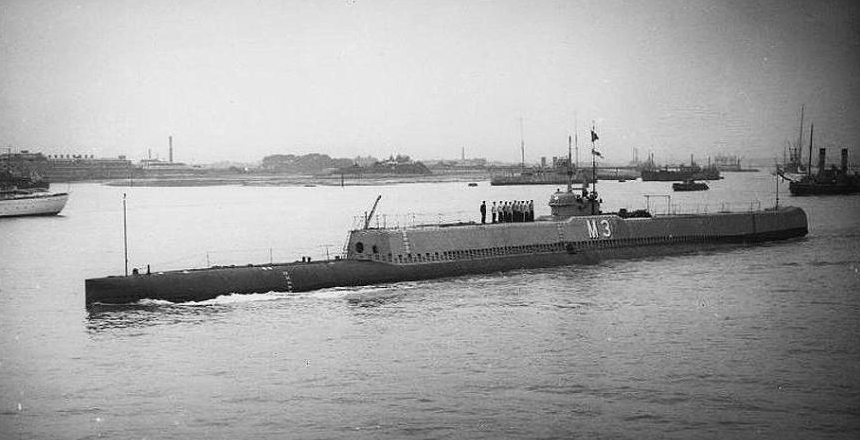HMS M3
M3 was ordered from Armstrong Whitworth on 28 July 1916 and laid down at Elswick in December as an M-class submarine. She was launched on 19 October 1919, and commissioned as M3 on 16 March 1920. After completion of trials on 17 August, she was placed in reserve.
M3 was converted to an experimental minelayer, as a result of the Washington Naval Treaty placing limits on submarine weaponry. Her 12-inch and 3-inch guns were removed to make room for a large free-flooding superstructure extending over about 75% of her length. Two sets of rails ran along the pressure hull inside this structure, capable of accommodating 100 standard Type B contact mines. The mines were laid by means of a conveyor chain through a single large door at the stern.
The minelaying machinery and mines added approximately 54 tons to the submarine’s mass, and also had adverse effects on M3’s diving ability – the time required to flood the large casing (which held 600 tons of water) meant that it took around 5 minutes to dive in calm weather, and at least 13 minutes in rough weather, and was dangerously slow to catch a trim.
M3 was originally to be scrapped in 1933, but the date was brought forward after the unfavourable reports of her abilities as a minelayer, and she was sold out of service on 6 February 1932, and was scrapped at Newport in April 1932.





